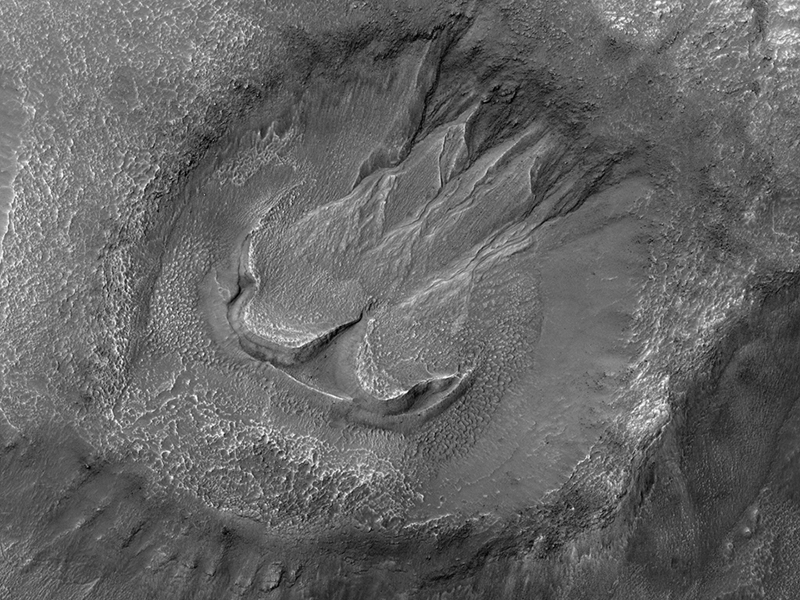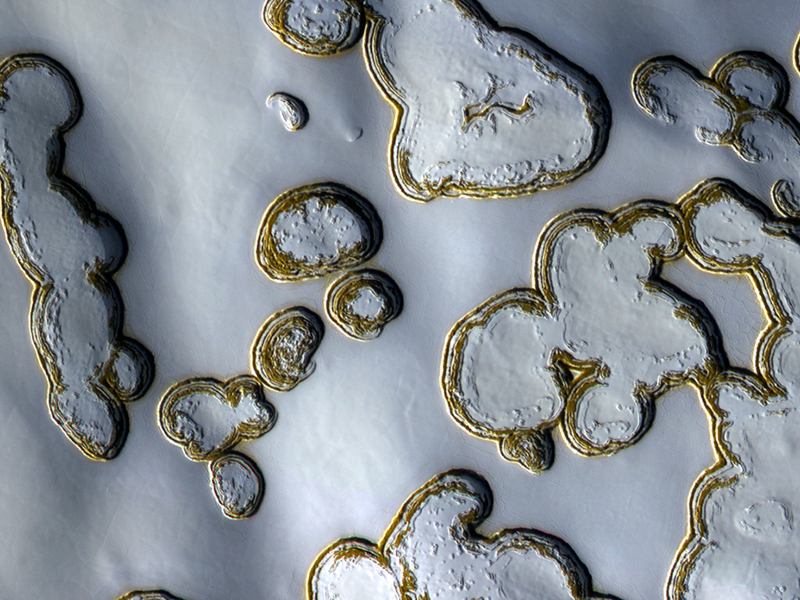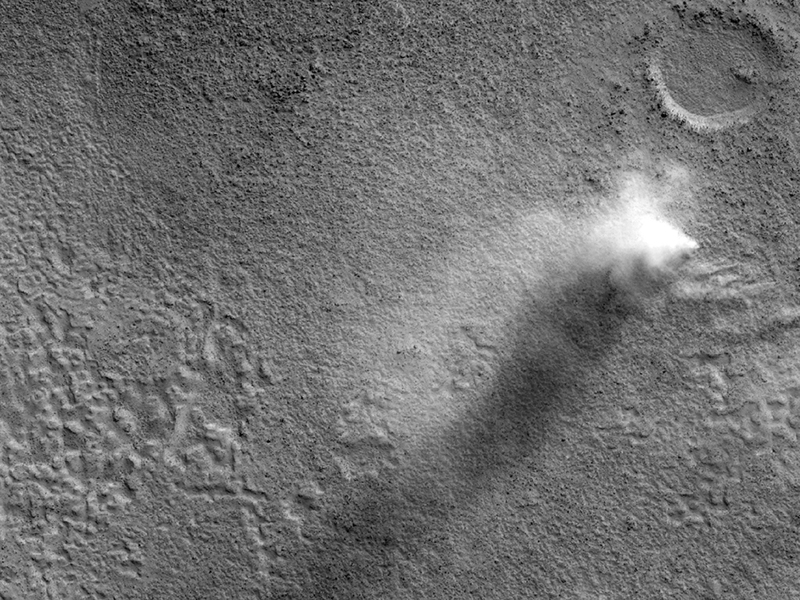HiRISE Science Team wrote:Gullies and Lobate Material in a Crater in Nereidum Montes (ESP_023173_1405)
This crater has gullies on its southwest-facing walls and rim, as well as and what appears to be two separate instances of lobate (ear-shaped) material associated to its interior gullies.
This observation is a "ride-along" with the CTX Camera, which has a much larger footprint, but lower resolution than the HiRISE camera.
With much better resolution than CTX, HiRISE may be able to provide insight into the relationship between the features.
HiRISE Science Team wrote:Iazu Crater (ESP_023237_1775)
With Opportunity's arrival to the rim of Endeavour Crater, we prepare for our science activities by using HiRISE to perform a reconnaissance of the surrounding craters.
Not far to the south of Endeavour Crater lies Iazu Crater. The crater walls, which are better exposed than those of Endeavour,may provide a regional context for Opportunity's studies.
While it is in no way guaranteed that Opportunity will ever travel to Iazu Crater, the secrets revealed by taking this image may provide insight into the stratigraphy and structure of Endeavour Crater and help define the scientific campaign of Opportunity at Endeavour.
Shane Byrne wrote:Carbon Dioxide Ice in the Late Summer (ESP_023464_0945)
Mars has extremely large temperature changes from winter to summer compared to the Earth. It gets cold enough to freeze carbon dioxide out of the atmosphere during the winter, but this ice is unstable when the warmer summer arrives and forces it to sublimate (transform directly back into a gas) away.
Near the South pole though, it stays cold enough for some of this seasonal ice to stick around all year and even accumulate from year to year. This image shows a portion of this permanent carbon dioxide ice cap. This slab of ice is a few meters (about 10 feet) thick and is penetrated by the flat-floored pits shown here. The quasi-circular pits in the center of the scene are about 60 meters (200 feet) across.
The distinct color of the pit walls may be due to dust mixed into the ice. For most of the year these walls are covered with bright frost, but they defrost and show their true colors at the end of the summer.
Ken Herkenhoff wrote:Fan and Dust Devil in Deuteronilus Mensa (ESP_023671_2270)
This image shows what appears to be a degraded alluvial fan at upper left and a dust devil at lower right.
An alluvial fan is deposited by a river flowing out onto a plain; if this feature was formed by water, the activity ceased long ago, based on the density of craters on the fan surface.
The dust devil, on the other hand, is an example of the ongoing processes that continue to shape the surface of Mars.
Credit: NASA/JPL/University of Arizona
<< Previous HiRISE thread



